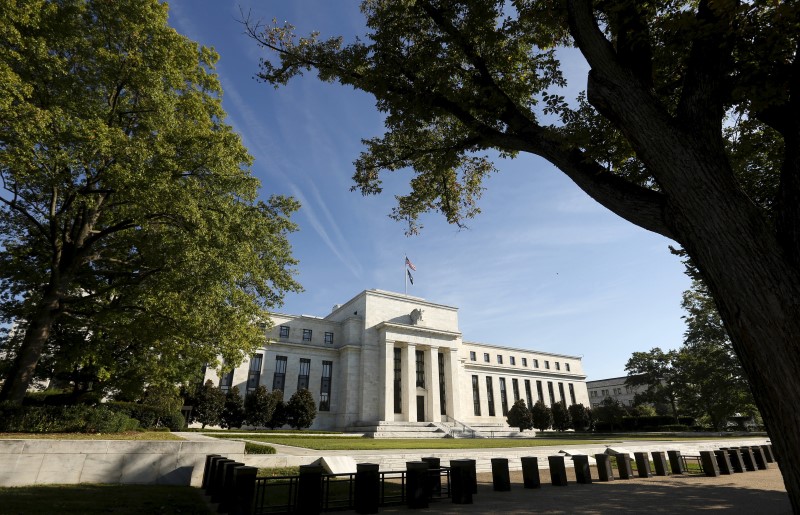Investing.com -- The Federal Reserve raised interest rates by 0.25% on Wednesday, and signalled a possible pause in June, though stressed that incoming data would reign supreme on monetary policy decisions.
The Federal Open Market Committee, the FOMC, raised its benchmark rate to a range of 5% to 5.25% from 4.75% to 5% previously.
In its May policy statement, the FOMC said "the extent to which additional policy firming may be required" would "take into account the cumulative tightening of monetary policy," and other incoming data. That marked a shift away from its prior language in March when Fed members anticipated “some additional policy firming may be appropriate," suggesting that a pause on hikes is in play for June.
The tweak in policy language marked a "meaningful change," Fed Chairman Jerome Powell said Wednesday, [as] "we were no longer saying that we anticipate [some additional policy firming]."
In sign of a shift to a data-dependent stance, Powell said the future monetary policy decision "will be driven by the incoming data meeting by meeting."
The latest rate hike not only lifted the Fed’s benchmark rate to the peak level predicted in March, but also to the highest level in 16 years as the Fed wages war against elevated inflation.
While inflation has shown signs of cooling, many worry about the upside threat that a strong labor market poses for inflation, particularly core services ex-housing inflation, which makes up the bulk of price pressures.
The most recent reading on core PCE, which is the Fed's preferred inflation measure and excludes volatile components of food and energy, slowed to 4.6% in March. But that is still well above the Fed’s 2% target, with FOMC reiterated that "inflation remains elevated."
The Fed, however, continued to warn that it will take time for its monetary policy measures to slow the economy, and bring down inflation.
The fastest pace of rate hikes seen in four decades appears now to be taking shape as pressures in parts of the economy including in regional banking and commercial real estate start to emerge.
Following the collapse of several regional banks including First Republic, many on Wall Street are looking out for further pressures in the sector that could trigger a sharp decline in lending activity and weigh on economic growth and inflation.
Goldman Sachs (NYSE:GS) said recently that tighter credit conditions are likely to slow growth in 2023 by about 0.4%, equivalent to the usual impact of 40bps of rate hikes.
At its previous meeting in March, the Fed's staff acknowledged that the impact of the wobble in the banking sector could potentially drive the economy into a “mild recession” starting later this year.
Following the FOMC meeting and conclusion of Powell's press conference, markets continue to price in a pause in June.
"Our base case remains intact for a pause here after this meeting, followed by a pause until rate cuts begin in Q1 2024. It will be very interesting to see how Fed officials adjust their 'dot plot' forecasts in June, Jefferies said in a note.
